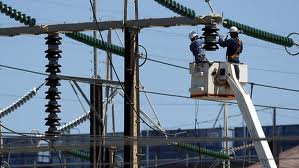Australian electricity utilities face a new challenge from a fast-growing interest from Australian households in home energy storage.
Numerous companies are poised to roll out home energy storage solutions in coming months, and all solar installers and distributors report a growing rate of inquiry about battery storage.
Michael Anthony, from solar distributor and systems aggregator Solar360, says between 15 and 20 per cent of solar customers are asking about storage, and that rate is increasing each month.
According to his estimates, the annual rate of installations of battery storage in Australian homes could reach around 1,000 by the end of the year, but this is just scratching the surface of the market.
Australia currently has around 3.4GW of solar PV on household rooftops (and some businesses), but this is expected to rise six fold out to 2030 as households invest another $30 billion on household solar systems.
Many of these installations will look at battery storage because of the structure of tariffs and decisions by network operators, retailers and pricing regulators.
The decision by regulators to assign a low “value” of solar exports, and to make such payments voluntary in some jurisdictions, is forcing homeowners to look at how to “self-consume” their solar output rather than export it back to the grid. Battery storage is an obvious option.
Recent decisions by network operators Ergon Energy and Energex to place restrictions on rooftop solar systems exporting back into the grid will do the same. Ergon Energy says it is inevitable that households will turn to storage, mainly because it is cheaper than the unsubsidised delivery of centralised power. It will also save the network operator money because it won’t have to build so many poles and wires.
But it’s not just those in rural and remote areas, in new subdivisions or facing massive connection costs for new homes in semi rural areas that are looking seriously at storage solutions.
The city is also full of “early adopters”, those who take up technology at the early stage of the cycle, as happened with solar before the tariff-charged boom of recent years.
“Everyone is talking about energy storage systems, it just makes sense,” Anthony says.
As electricity bills increase, the costs of solar plus storage are falling. Anthony estimates that the starting price, even for homes in the city, is below $30,000, all inclusive.
UBS recently predicted that households in major Australian cities may find it economic to go “off-grid” as early as 2018. Morgan Stanley predicted a mass move toward energy storage, and warned of an imminent “tipping point”. CSIRO noted that half of domestic demand could be met by solar and storage on-site.
But it’s not just the economics that are driving customers, Anthony says, it is also frustration with bills, and utilities, and the desire to do something good, and to be independent.
 “It’s such a romantic idea – you store energy during day, you deploy at night, and the systems look like the bees-knees.”
“It’s such a romantic idea – you store energy during day, you deploy at night, and the systems look like the bees-knees.”
Solar360 on Monday launches a new product suite, training program and website that allows systems to be properly sized for the needs and resources of households and businesses.
Anthony said recent experience showed it was clear that one type of product would not meet the market, and various options were required to fit the market place.
The new suite includes a “city” option, that allows homes in the cities to store energy but remain connected to the grid, a “back-up” option, that essentially allows households to go off grid, and an “integrated” option.
Over a 15 year period, the “city” solution is offering returns on investment of between 18 and 27 per cent – and that includes a storage replacement within that time frame.
The back-up solution offers returns of 15-19 per cent, he says.
Lithium-ion batteries, normally priced at around $1,000/kWh, are now priced as low as $630/kWh.
“We have teamed up with a range of (inverter and battery storage) manufacturers such as Schneider, BYD, SolarX, PylonTech, and Nerada,” he said.
Telecommunication companies, such as China giant ZTE, are also entering the market.
“Welcome to the new world,” Anthony said. “That’s why we are launching this on Bastille day. Vive la revolution.”








